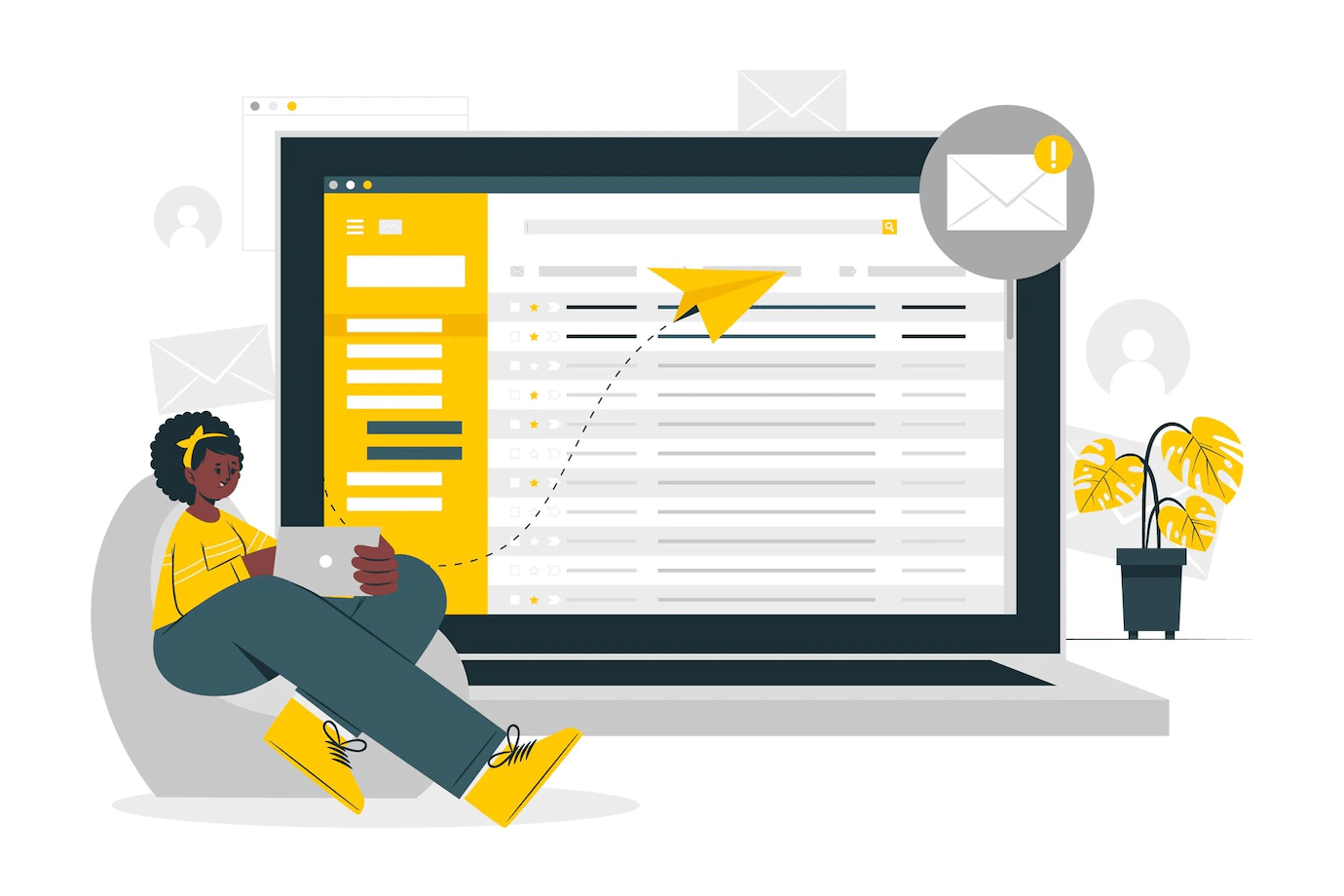7 Mistakes to Avoid When Emailing Your Ecom Customers

Irene Wanja | Aug 09, 2022
Reading Time: 5 minutesEmail marketing is a key tool for ecommerce brands looking to build relationships with their customers and drive sales. When done right, it can be highly effective, providing a direct channel to reach customers and followers with personalized messages, and cultivate loyalty and repeat business through exclusive discounts or early access to sales and new product launches. It can also be an invaluable way to collect customer feedback and gather intelligence about customer preferences. For ecommerce brands, email marketing provides an essential opportunity to connect with customers and promote their products. However, many brands make mistakes that can hamper their efforts. Here are some of the most common mistakes businesses make when sending emails to their customer base.

1. Sending Too Many Emails
Bombarding people’s inboxes with too many emails can quickly lead to customers feeling overwhelmed and even annoyed, causing them to unsubscribe from your email list … or worse, mark your messages as spam. When creating your email marketing strategy, it’s important to strike a balance between keeping your customers informed, but not blasting them with too much information. A good rule of thumb is to limit promotional emails to one per week and focus the majority of your content on providing value-added content, like informative blog posts or helpful guides. By striking the right balance, you can ensure your customers will appreciate the content you’re sending them, rather than feel inundated by it.
2. Not Personalizing Emails
Ecommerce brands need to ensure that their email communications are personalized to establish and maintain good relationships with their customers. One of the most common mistakes is to send out emails that are not personalized. This can come across as generic, insincere, and even spammy. It is important to remember that customers are more likely than ever to unsubscribe from email lists that they perceive as being uninteresting or impersonal. In order to avoid this, take the time to include the customer’s name in the subject line or body of the email and craft personalized messages that will resonate with them. You may also want to consider using dynamic content in your emails in order to further customize the experience for each individual reader. By taking the time to personalize your email communications, you can stay one step ahead of the competition and build strong relationships with your customers.
3. Not Segmenting Email Lists
While email can be an effective way to reach out to customers, ecommerce brands often make the mistake of not segmenting their email lists. This means that they send the same message to everyone on their list, regardless of whether they are interested in the product or not. Not only is this a wasted opportunity to reach potential customers, but it can also result in higher levels of unsubscribes and spam reports. By not segmenting their lists, brands are missing out on a valuable opportunity to personalize their messages and create a more engaged customer base. Segmentation allows brands to send targeted, relevant messages to specific groups of customers, increasing the likelihood that those messages will be read and responded to. Additionally, segmentation can help to improve customer loyalty and retention by fostering a sense of connection and belonging. In an increasingly competitive ecommerce landscape, brands that fail to segment their email lists are at a distinct disadvantage. Those that take the time to segment their lists will be well-positioned to build strong relationships with their customers and drive long-term growth. So, if you’re not already segmenting your email list, now is the time to start.
4. Not Using a Call to Action
Ecom brands make a big mistake when they don’t use a CTA in their emails to customers. A CTA, or call-to-action, is a key element of email marketing that can help increase conversion rates. A CTA will ensure that customers know what the email is about and what they need to do. By not using a CTA, ecommerce brands are doing a disservice to their customers. The email may be confusing, and the customer may not know what the next step is. In addition, the customer may feel like the ecommerce brand does not value their time. By using a CTA, ecommerce brands can avoid these issues and give their customers a good experience.
5. Sending Irrelevant Content
Sending irrelevant content is one of the most common mistakes ecommerce brands make when emailing their customers. Not only is this a surefire way to get your emails ignored, but it can also damage your relationship with customers. After all, nobody likes to feel like they’re being spammed with irrelevant information. Instead of sending out generic emails, take the time to segment your list and send targeted messages that are relevant to each customer’s needs and interests. You may even want to consider using customer data to personalize your emails even further. By taking the time to send relevant, targeted emails, you’ll be much more likely to build a strong rapport with your customer base – and that’s an essential ingredient for any successful ecommerce business.
6. Failing to Test Email Campaigns
One of the most important aspects of email marketing is testing. By A/B testing subject lines, send times, and other elements of your email campaign, you can maximize your open rates and click-through rates, ensuring that your message is getting in front of the right people at the right time. However, many ecommerce brands make the mistake of failing to test their email campaigns before they hit the send button. This can lead to a number of issues, including low open rates, high unsubscribe rates, and complaints of spam. In addition, failed tests can waste time and money, as well as damage your sender reputation. To avoid these problems, always take the time to test your email campaigns before you launch them. By doing so, you can ensure that your messages are getting through to your customers loud and clear.
7. Forgetting the Mobile Experience
In today’s world, more and more people are accessing their email inboxes from their smartphones. In fact, according to a recent study conducted by 99Firms, over 60% of all email opens now occur on mobile devices. This trend is only likely to continue, which means that it’s more important than ever for ecommerce brands to optimize their email campaigns for the mobile experience. Unfortunately, many brands are still lagging behind in this area. One of the most common mistakes is failing to use responsive design. As a result, their emails end up looking distorted and difficult to read on small screens. Another mistake is using large images that take forever to load on mobile connections. Not only does this frustrate customers, but it also makes it less likely that they’ll actually engage with the email content. By neglecting the needs of mobile users, ecommerce brands are missing out on a huge opportunity to connect with their customers.
Wrap-Up
Customers are bombarded with marketing messages on a daily basis, and they quickly become desensitized to generic or irrelevant content. As a result, ecommerce brands need to make sure that their emails are targeted and relevant to the interests of their customer base. Segmenting the emails into different groups and personalizing them with the customer’s name or other information will show that you value their time and want to provide them with content that is specifically tailored to their needs. By taking the time to send relevant and targeted emails, you can build stronger relationships with your customer base and increase sales.
About the author
Irene Wanja
Irene, a skilled Revenue Optimization Specialist for Build Grow Scale, combines an unparalleled focus on user research and a deep understanding of the ecommerce customer journey to orchestrate optimal shopping experiences. With an uncanny knack for detecting and addressing customer pain points through meticulous user testing, she utilizes tools such as moderated user tests, heatmaps, scrollmaps, and clickmaps to fast-track improvements in user experience and usability. Her keen eye for detail aids in swiftly spotting potential issues and implementing solutions, all while working closely with store owners and applying her intricate comprehension of user interactions. Passionate about software and technology, Irene immerses herself in enhancing her clients' business clarity, efficiency, and user satisfaction. Even though the value of user experience doesn't conform to a conventional numerical scale, the tangible outcomes of her work—improved user experience, amplified retention rates, and reduced customer support issues—are testaments to her prowess. Beyond her revenue optimization skills, Irene is a skilled writer and copywriter. She weaves her profound insights into engaging prose, crafting content that not only resonates with diverse audiences but also demystifies the complexities of user experience, consequently benefitting businesses worldwide.






